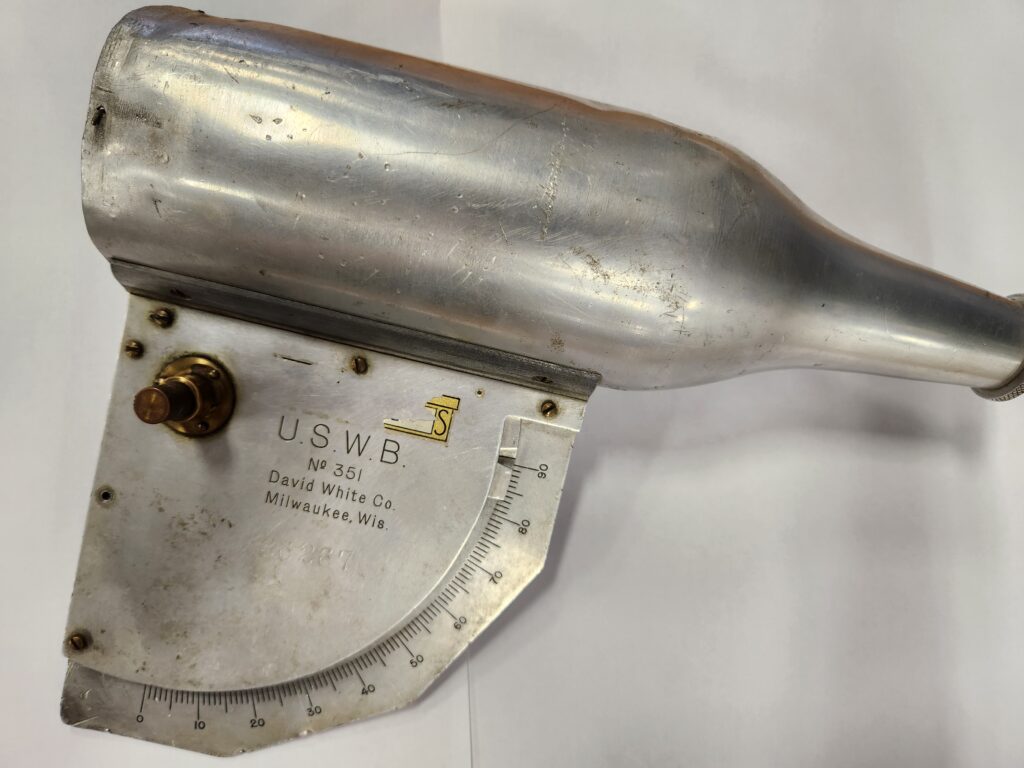A clinometer allows meteorologists to measure the ceiling height of clouds (the lowest layer). Meteorologists can send a bright light straight up, then the point the clinometer at the point where the beam disappears, meaning it is is hitting the clouds. The instrument has a swinging weight on it that will measure the angle that the clinometer is pointed at. The meteorologist can then use trigonometry to determine the cloud height using just the angle and the distance from the light.

Clinometers were replaced by ceilometers which measure the angle automatically, and most airports have even started using LIDAR which sends a vertical light and measures the time it takes to return to the ground. The same technique that the clinometer uses can also be used to measure the height of buildings, trees, and more!
Pilots rely on the ceiling height so that they know whether they can fly under clouds or if they will have to fly through them. If they accidentally fly through the clouds, they may not expect to lose visibility which puts them in danger.

